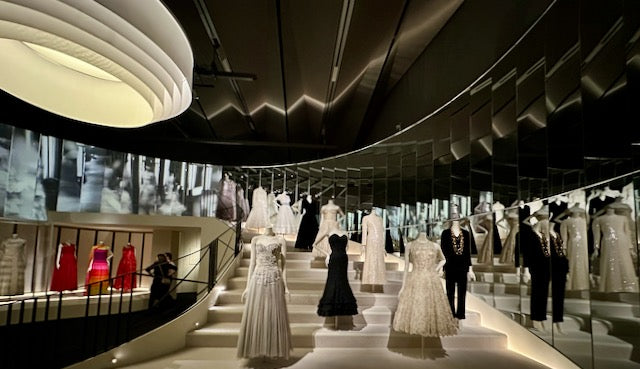 |
|
Poster for New York World's Fair, by Albert Staehle, 1939
Following the 1925 Paris Exposition, the French Art Deco style crossed the Atlantic, and became popular in America. It was showcased through the work of commercial illustrators, whose images adorned the pages of fashionable magazines such as Harpers Bazaar.  French Art Deco Wedding, 1930, from Harpers Bazaar by André Edouard Marty Art Deco began to influence American designers, after the Wall Street Crash of 1929 and the following Great Depression. This influence spread from objects of art to fashion, transportation and architecture, where the Art Deco style began to shape modern American cities, including New York.  New York by Tamara de Lempicka, 1930-1935 By the 1930s, American architects were competing to design and build the tallest skyscrapers, frequently resorting to spires, to add extra height to the buildings.  Chrysler Building, New York, built 1930, showing the Geometric Sunburst spire The Chrysler Building in New York City, designed by William van Allen and named after Walter Henry Chrysler, was built from 1928-1930 and reached 319m in height. It was the world’s tallest building for a year, until the Empire State Building superseded it in 1931. The Chrysler’s shiny metallic finish, inspired by the Chrysler motor cars, features a 38m tall spire of Art Deco geometric sunbursts.  Wisdom, by Lee Lawrie, Rockefeller Center, New York American architect Raymond Hood, famous for his Art Deco building design, designed the Daily News building in Manhattan, which was completed in 1929. In the early 1930s, Hood designed a complex of 19 buildings in midtown Manhattan. The RCA building, which is now known as the General Electric building, is a 70-floor skyscraper and was the centrepiece of the complex. Sculptor Lee Lawrie, was commissioned to design Art Deco style sculptures, to brighten up the limestone façade.  Atlas sculpture by Lee Lawrie, Rockefeller Center, New York Lawrie created 12 pieces for the RCA building, including the Atlas sculpture (1934), which is displayed at the Fifth Avenue entrance.  Light, by Lee Lawrie, Rockefeller Center, New York American advertisers started to use Art Deco style geometric designs, to market ‘modernity’ to customers. Railroad companies, such as the New York Central Railroad, used the Art Deco influence to advertise their services to upwardly mobile Americans, who wished to travel in style.  The New 20th Century Limited, Poster for the New York Central System, ~1946, by Leslie Ragan |
American Art Deco
Posted by Deco London on



